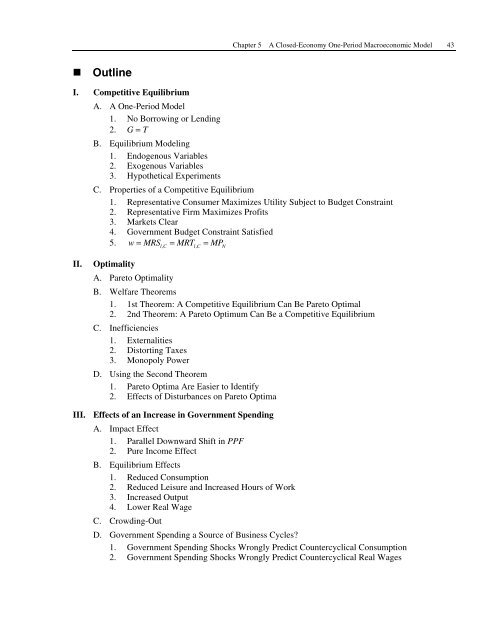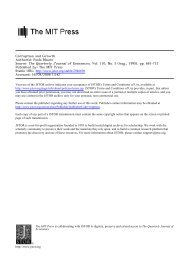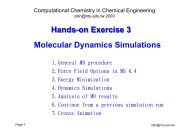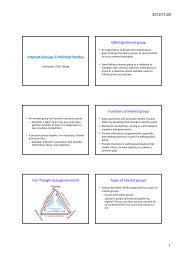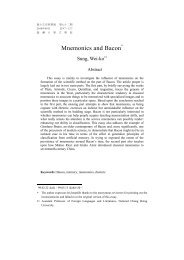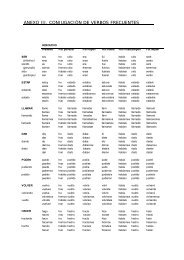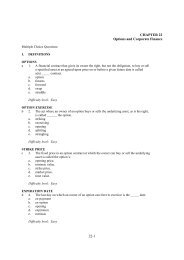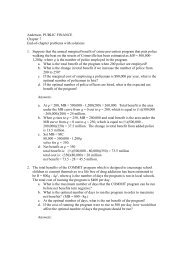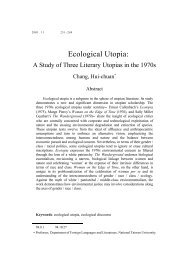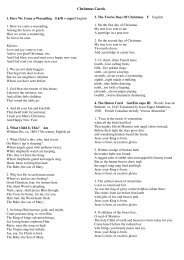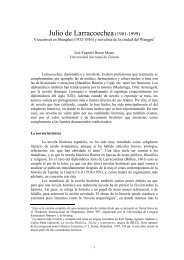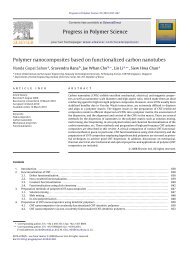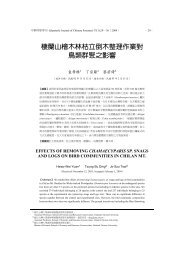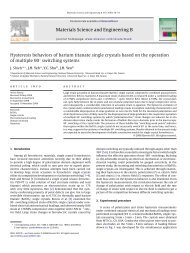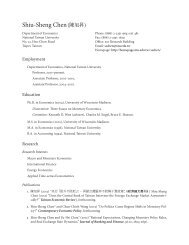Chapter 5 A Closed-Economy One-Period Macroeconomic Model
Chapter 5 A Closed-Economy One-Period Macroeconomic Model
Chapter 5 A Closed-Economy One-Period Macroeconomic Model
Create successful ePaper yourself
Turn your PDF publications into a flip-book with our unique Google optimized e-Paper software.
Outline<br />
<strong>Chapter</strong> 5 A <strong>Closed</strong>-<strong>Economy</strong> <strong>One</strong>-<strong>Period</strong> <strong>Macroeconomic</strong> <strong>Model</strong> 43<br />
I. Competitive Equilibrium<br />
A. A <strong>One</strong>-<strong>Period</strong> <strong>Model</strong><br />
1. No Borrowing or Lending<br />
2. G = T<br />
B. Equilibrium <strong>Model</strong>ing<br />
1. Endogenous Variables<br />
2. Exogenous Variables<br />
3. Hypothetical Experiments<br />
C. Properties of a Competitive Equilibrium<br />
1. Representative Consumer Maximizes Utility Subject to Budget Constraint<br />
2. Representative Firm Maximizes Profits<br />
3. Markets Clear<br />
4. Government Budget Constraint Satisfied<br />
w= MRS = MRT = MP<br />
5. lC , lC , N<br />
II. Optimality<br />
A. Pareto Optimality<br />
B. Welfare Theorems<br />
1. 1st Theorem: A Competitive Equilibrium Can Be Pareto Optimal<br />
2. 2nd Theorem: A Pareto Optimum Can Be a Competitive Equilibrium<br />
C. Inefficiencies<br />
1. Externalities<br />
2. Distorting Taxes<br />
3. Monopoly Power<br />
D. Using the Second Theorem<br />
1. Pareto Optima Are Easier to Identify<br />
2. Effects of Disturbances on Pareto Optima<br />
III. Effects of an Increase in Government Spending<br />
A. Impact Effect<br />
1. Parallel Downward Shift in PPF<br />
2. Pure Income Effect<br />
B. Equilibrium Effects<br />
1. Reduced Consumption<br />
2. Reduced Leisure and Increased Hours of Work<br />
3. Increased Output<br />
4. Lower Real Wage<br />
C. Crowding-Out<br />
D. Government Spending a Source of Business Cycles?<br />
1. Government Spending Shocks Wrongly Predict Countercyclical Consumption<br />
2. Government Spending Shocks Wrongly Predict Countercyclical Real Wages


